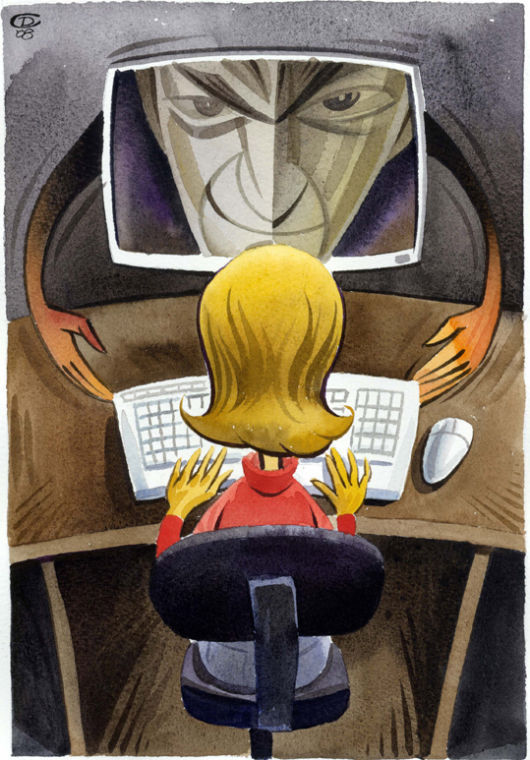Through a keyboard, darkly
November 8, 2013
It is better to get to know someone face to face than from behind a screen and a keyboard.
Today many social media sites are being used as a way for people to meet others. It is not only online chat rooms; people also use sites such as Facebook and MySpace.
Meeting people online can be reckless and put you in a dangerous situation, which is why people should do not engage in such behavior.
In a world of seven billion people, with a majority of them using the Internet, safety has to be a priority.
When you first meet someone online you have no idea who you are interacting with; you could be talking to anyone. Even though social media sites can give the option to provide a description of a person with a photo, it can always be false information.
On the Internet there are some people who disguise themselves as someone else or make up fake names and identities in order to meet other random people. This has been happening since social media first became popular. It has become so well known that a new term for the behavior has been coined – Catfish or Catfishing.
The term Catfish was coined in a 2010 documentary following the online relationship of a man named Nev Schulman. In the movie he finds out his young and single online fling is actually an older woman who is already married.
The idea behind the name Catfish came from the woman’s husband, Vince Pierce. Pierce, in the process of transporting cod from Alaska to China, placed catfish in with the cod as a means to keep the cod fit, which in turn prevented the flesh from becoming soft and tasteless, according to an interview of Schulman with Katie Couric. The presence of the catfish kept the cod constantly moving, which is similar to the Internet phenomenon; the predators constantly keep their prey guessing, hence the name.
The most startling and newsworthy example of Catfishing had to do with then Notre Dame football star Manti Te’o when he claimed he had fallen victim to the scheme, according to the Boston Globe.
People who misrepresent themselves usually do not have the best intentions or desire to have a friendship or a romantic tryst over the web. Many use fake Internet identities as a means to scam unsuspecting people.
Scam artists use social media sites to scam random people by first trying to become friends. Once they become friends with the potential victim, scam artists will try to steal their victim’s identity and, as sad as it may seem, many people do actually trust these online ‘friends.’
Often people are tricked into giving away their personal information, like credit card numbers, because the scammer will promise a rewarding investment in a business or project. Of course the victim will never see any profits or get their money back because by the time they realize what has happened, the scam artists are gone, and they are left with only fake credentials.
To prevent against being taken advantage of and to prevent from being tricked through the Internet people should stop becoming friends with strangers on social media sites.
Because there are seven billion people in the world, there will always be somebody new to meet. At least then you can get a better idea of who that person is.
-Marissa Mararac is a junior communication major from Tacoma. She can be contacted at 335-2290 or by [email protected]. The opinions expressed in this column are not necessarily those of the staff of The Daily Evergreen or those of Student Publications.





















